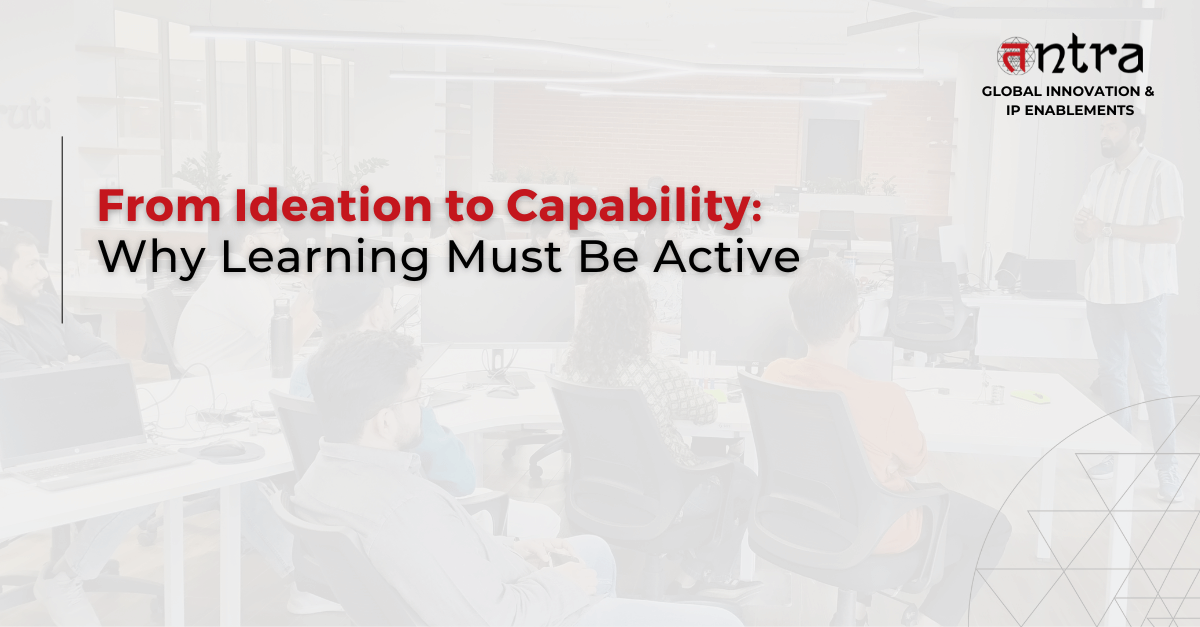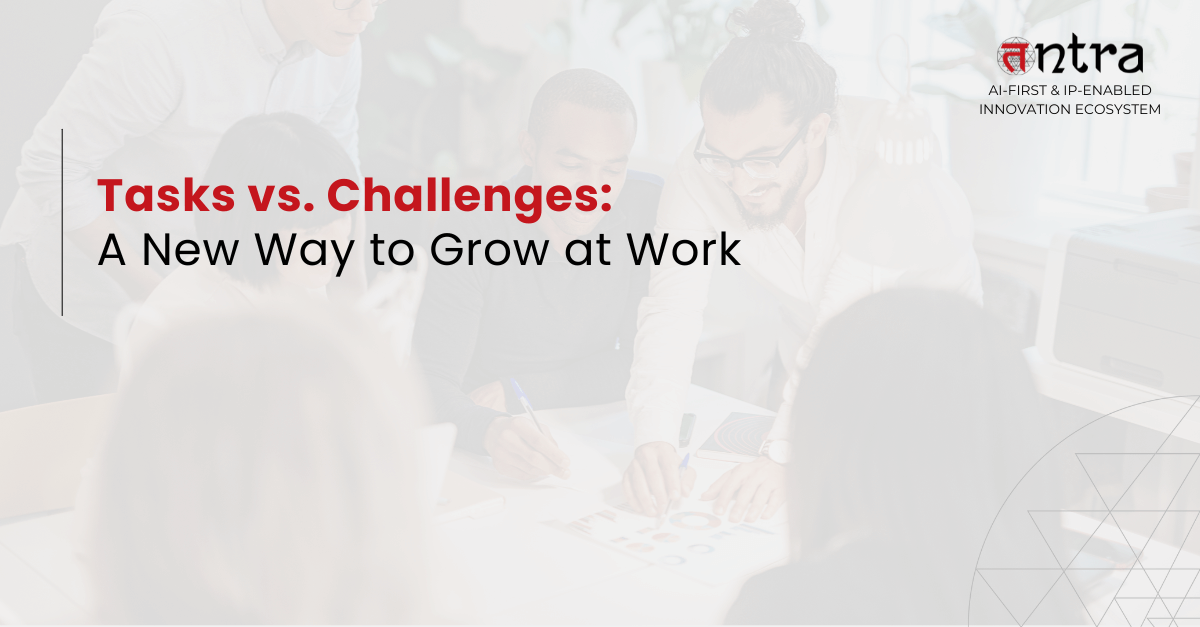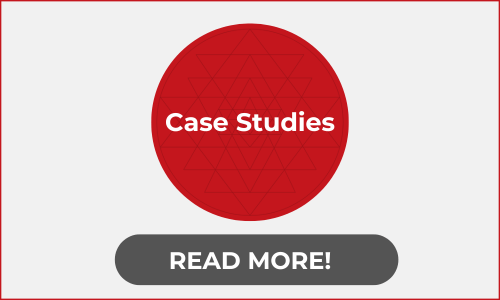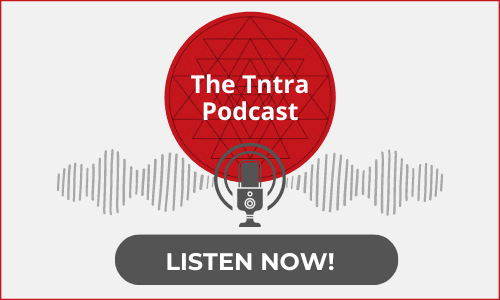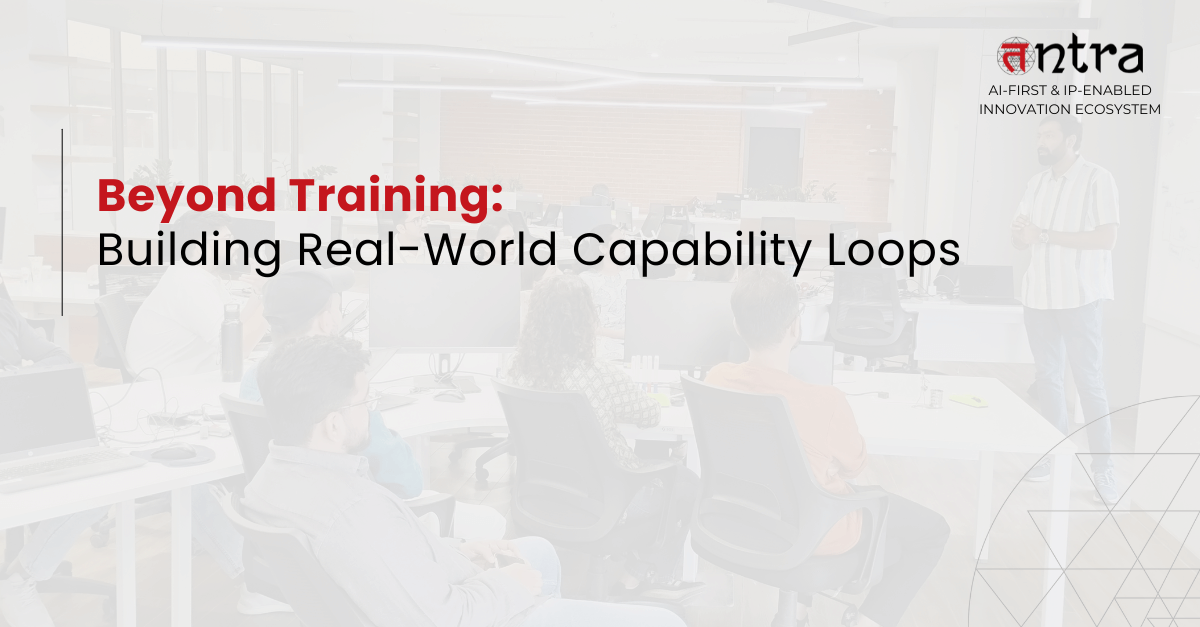
Beyond Training: Building Real-World Capability Loops
Table of Contents
ToggleMost “training programs” don’t really change how people work. We’ve all been there, sitting through a two-day workshop, getting a shiny certificate, and then going back to the exact same routines.
Training gives information, but information alone doesn’t turn into action. What actually changes how we work, lead, and adapt is something deeper, what I call real-world capability loops.
These loops aren’t about ticking off a learning checklist. They’re about putting people in cycles where they learn something, try it, reflect on the outcome, tweak their approach, and do it again. It’s messy, practical, and continuous, just like real life.
Why Training Falls Short
The old model of training assumes: “If I teach you something, you’ll remember it and use it when needed.”
But humans don’t work like that. We forget. We get distracted. And unless we’re applying what we learn in real situations, the knowledge fades quickly.
That’s why so many organizations end up with employees who have completed dozens of courses yet still feel unprepared for real-world challenges. They have certificates, but not capabilities.
What’s a capability loop, really?
Think of a capability loop as a mini-cycle of growth:
- Learn something new, not in theory, but in a way connected to your actual work.
- Apply it immediately, test it on a project, a client, or a decision.
- Reflect on the results, what worked, what didn’t, what felt uncomfortable.
- Adapt your approach, make adjustments, guided by feedback.
- Repeat, go through the loop again, this time sharper.
When people repeat this loop over and over, they don’t just “know” things, they become capable. And when teams across a company run these loops together, you get organizational capability development, growth that sticks at scale.
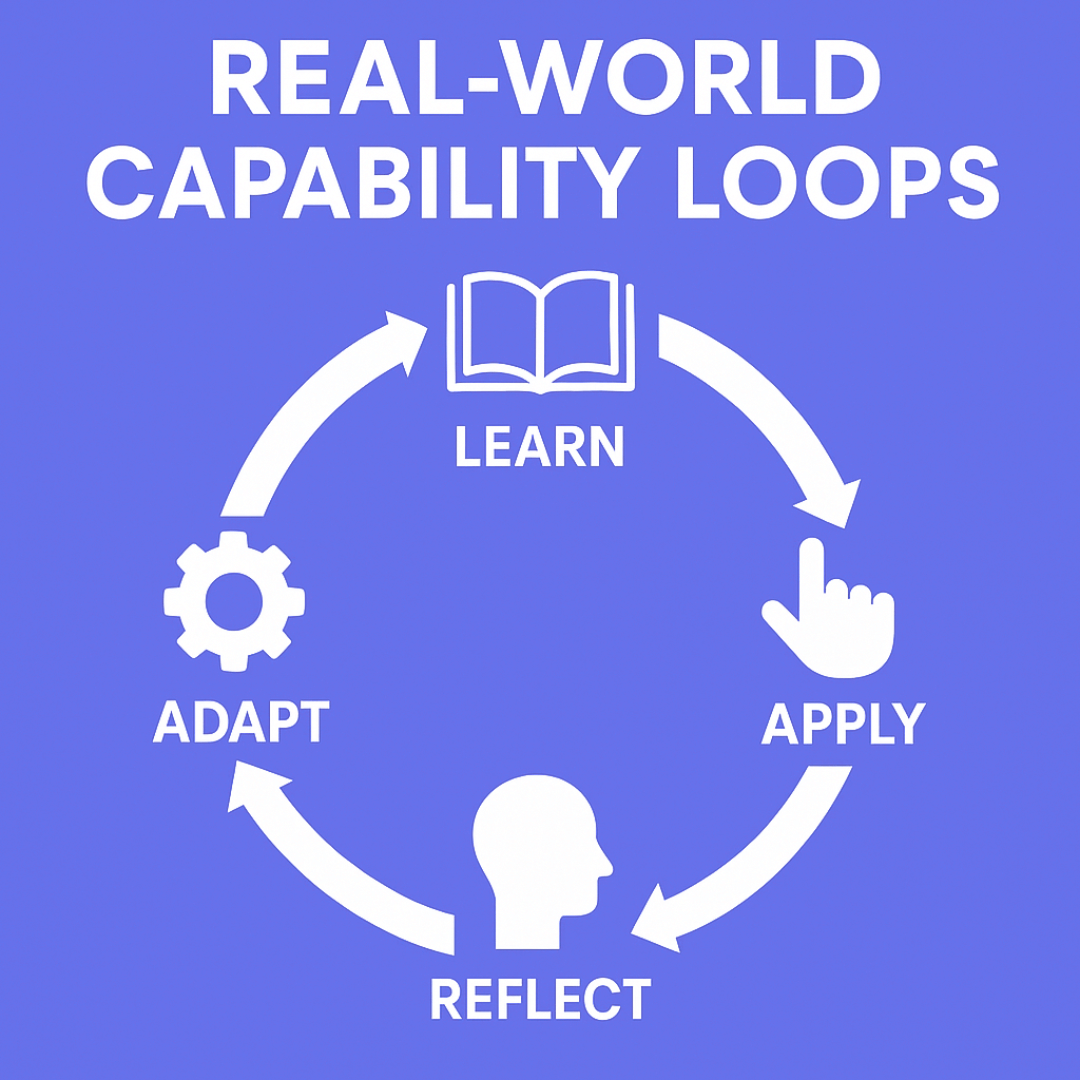
Capability Building > Training
Training tells you “what.”
Capability building shows you “how.”
It’s the difference between reading about swimming and actually getting in the water.
For example, if you’re a sales leader, a training program might give you negotiation tactics. But in a capability-building loop, you’d practice those tactics in live deals, get feedback from a mentor, reflect on how it went, and refine your approach for the next conversation.
The result? Not just more knowledge, but real, applied skills and competencies for business that directly move the needle.
Why Alignment Matters
Here’s the catch: not every skill matters equally. You don’t want random capability loops floating around with no connection to your business goals.
That’s where business capability management comes in. It’s a fancy term for a simple idea: align your people’s learning loops with the capabilities your business actually needs.
Say you’re a logistics company trying to improve delivery resilience. Training in “generic leadership” might be nice, but your real edge will come from building loops around predictive analytics, supply chain visibility, and cross-border compliance.
Or if you’re a bank going digital, your focus should be data literacy, cybersecurity, and customer experience.
This alignment ensures that capability loops aren’t just “good for employees”, they directly fuel business outcomes.
The Power of Real-World Capability
The true test of learning is not whether someone can pass a quiz, but whether they can handle real-world complexity.
That’s what real-world capability means. Can your team solve unpredictable problems? Can they collaborate across silos? Can they adapt when the market shifts overnight?
The best way to build this isn’t through lectures, but through projects, simulations, challenges, and on-the-job experiments. Think of hackathons, stretch assignments, or mentor-guided projects. These give employees a safe but real environment to practice, fail, and improve.
That’s when capability stops being theory, and becomes muscle memory.
Mapping, Assessing, and Maturing Capabilities
Organizations often ask: “Where do we even start?”
The answer lies in business capability mapping. It’s basically taking stock: What can we do well today, and what do we need to do to compete tomorrow?
From there, you run a capability assessment, rating current strengths and weaknesses. And once you know the gaps, you can design targeted —oops to close them.
The capability maturity model helps too. It shows you where you stand on the journey:
- Are your practices ad hoc?
- Repeatable but inconsistent?
- Standardized and measured?
- Or fully optimized, with continuous improvement built in?
Wherever you are, a capability roadmap can guide the next step. It’s not about chasing perfection; it’s about building momentum loop by loop.
From Individual Learning to Organizational Learning Loops
One of the biggest shifts is realizing that loops don’t just belong to individuals. Companies can design organizational learning loops where entire teams reflect, adapt, and improve together.
Imagine product, marketing, and tech teams working on a customer onboarding project. Each sprint becomes a loop, they try something, measure results, adjust, and try again. Along the way, everyone builds new capabilities they couldn’t have gained in isolation.
This creates a culture where learning isn’t an event. It’s how work happens.
Linking Capability to Business Value
Capabilities only matter if they connect to value. That’s why progressive companies link business value streams and capability development.
If customer onboarding is a value stream, you ask: what capabilities drive it? Maybe digital tools, compliance knowledge, and customer relationship management. Then, you build loops around those capabilities.
This way, every loop strengthens not just people but also the flows of value customers care about.
The Role of Lifelong Learning Platforms
All of this is easier with the right environment. A lifelong learning platform makes loops visible, trackable, and scalable. Even better, a lifelong learning & innovation platform combines structured learning with real challenges, peer engagement, and AI-driven personalization.
These platforms don’t replace human effort. They just make it easier for people to enter, sustain, and repeat capability loops without losing momentum.
A More Human Way to Grow
At the heart of this, capability loops are about being human. We all grow the same way: try something, stumble, reflect, try again, get better. Organizations just need to build systems that make this natural process part of everyday work.
Forget the obsession with certificates and one-off training events. The real differentiator for companies today is whether they can create environments where learning is continuous, applied, and connected to strategy.
When people live inside capability loops, they don’t just learn, they evolve. And when organizations embrace this, they stop “training employees” and start building a living, breathing system of capabilities that can adapt to anything.
Final Word
Training may check a box. But capability loops build futures.
They align learning with strategy, connect skills to value streams, and transform knowledge into real-world performance. They give organizations a way to stay resilient in the face of uncertainty, and they give individuals a path to grow every single day.
The organizations that thrive tomorrow will be the ones that stop asking, “What course should we run this quarter?” and start asking, “What capability loops should we build into the way we work?”
That’s the shift. Beyond training. Toward capability.
Ready to Turn Learning into Real-World Capability?
Go beyond traditional training and see how T(u)LIP — Tntra’s Lifelong Learning & Innovation Platform — helps organizations design capability loops that connect learning directly to business outcomes.
Book a Demo and experience how T(u)lip transforms the way your teams learn, grow, and deliver impact.
Related Articles:
What if Learning & Innovation Lived Together?
Active Learning for Real Innovation: Bridging the Gap from Ideation to Capability
